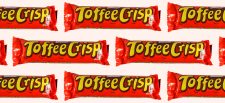Allergy research published in the Clinical & Experimental Allergy journal has found that eight foods or food groups were not included in the mandatory labelling of foods despite accounting for at least 1% of cases of food anaphylaxis.
As a result of the findings, the researchers proposed that goat’s and sheep’s milk, buckwheat, peas and lentils, and pine nuts should be considered for inclusion in the European mandatory labelling of foods list.
This would be in addition to the current allergen labelling, which mandates that the 14 allergens must be emphasised on food labels.
The current food allergens are:
- Celery
- Cereals containing gluten (such as wheat, rye, barley and oats)
- Crustaceans (such as prawns, crabs and lobsters)
- Eggs
- Fish
- Lupin
- Milk
- Molluscs (such as mussels and oysters)
- Mustard
- Peanuts
- Sesame
- Soybeans
- Sulphur dioxide and sulphites
- Tree nuts
Looking at reported cases of food induced anaphylaxis reported to the Allergy Vigilance Network from 2002 to 2023, researchers found that eight foods were frequently involved and were not currently listed in the European regulation.
Aside from goat’s/sheep’s milk, buckwheat, peas/lentils and pine nuts, the other four emerging food allergens included alpha-gal, kiwifruit, apple and beehive products.
In the main four emerging allergens, goat’s/sheep’s milk induced anaphylaxis was reported to be severe, with a grade three reaction in 39 cases (46.4%) and a grade four reaction in four cases (4.8%), including two deaths in school.
Buckwheat reactions were reported in 71 cases, with two-thirds involving adults. Anaphylaxis in response to buckwheat was also severe, with 33 grade three reactions (46.5%) and one grade four reaction (1.4%).
Peas and lentil were analysed together because of their frequent cross-reactivity, researchers said, but even when taken isolated they nearly reached the level of 1%. Of the 55 cases of anaphylaxis, 28 (50.9%) were due to peas and 27 (49.1%) were due to lentil, with most cases occurring in children.
Of the 49 pine nut-induced anaphylaxis, 36 (73.5%) occurred in children, with 24 grade three reactions (49%).
Dr James Cooper, deputy director of food policy at the Food Standards Agency, commented: “People with food hypersensitivities should have information to help them make safe food choices, and we recognise there are a significant number of foods that can cause allergies or intolerances. This is why pre-packed foods must list all ingredients, why food businesses must provide clear information about allergens and why we encourage consumers to speak up about their allergies.
“Allergen labelling must be based on robust scientific evidence, part of our ongoing commitment to protecting consumers.”
The full publication can be accessed by clicking here.









